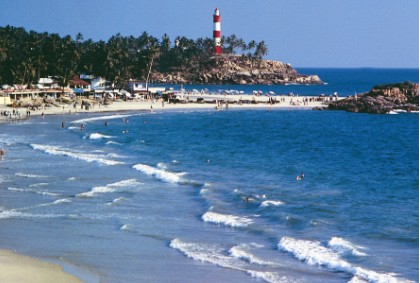
Kerala Wildlife
Nestled in the lush forests of the Western ghats in Kerala are 12 Wildlife sanctuaries and two National Parks.
The following are the Wildlife Sanctuaries / National Parks in Kerela :
Peppara Wildlife sanctuary
Neyyar Wildlife sanctuary
Shenduruni Wildlife sanctuary
Periyar Wildlife sanctuary
Idduki Wildlife sanctuary
Chinnar Wildlife sanctuary
Parambikulam Wildlife sanctuary
Aralam Wildlife Sanctuary
Muthanga Wildlife sanctuary
Kadalundi Bird Sanctuary
Thattekad Bird Sanctuary
Kumarakom Bird Sanctuary
Silent Valley National Park
Eravikulam National Park
Main animals in the sanctuaries of Kerela are :
Elephants, gaur, sambar, deer, wild dogs, jungle cats, tigers, wild boars, sloth bears, leopards, lion tailed macaques, Nilgiri Tahrs, langur, malabar giant squirrel, flying squirrel, tiger,panthers, spotted deer, grizzled giant squirrels, Hanuman langurs, peacocks, star tortoises, wild dogs, civet cats, The Atlas moth, bonnet, macaques, Loris, mongoose, foxen, bears, barking deer, pangolins, bison, bears etc..
The Reptiles found in the sanctuaries of Kerala are :
Cobra, Viper, krait, a number of non poisonous snakes, bicoloured frogs, crocodiles, varanur pond terrapins, cane turtles, star tortoises, geckoes, skunks, chameleons, spectacled cobras, pythons, green keel backs, rat snakes, vine snakes, monitor lizards etc...
Main birds seen in the sanctuaries of Kerela are :
Water fowl, Cuckoo, Owl, Egret, Heron, Water duck, Migratory Siberian Duck, Jungle fowls, Mynas, Laughing thrushes, Black bulbuls, Peafowls, Woodpeckers, Kingfishers, The hornbill, Stork, Raptor, Darter, Cormorant, Grackle, Cluster, Indian rollers, Common snipes, Crow pheasants, Jungle nightjars, Kites, Grey drongos, Malabar trogons, Llarge pied wagtails, Baya sparrows, Grey jungle fowls, Indian hill mynas, Robins, Jungle babblers, Sunbirds, Peacocks, Crimson-throated barbets, Bee-eaters, Shrikes, Fairy bluebirds, Grey-headed fishing eagles, Black winged kites, Night herons, Grey hornbills, Malabar hornbills and more than 253 additional species including migrant birds..
Main flora in the sanctuaries of Kerela are Teak, maruthu, karimaruthi, rosewood, venteak, vengal, chadachi, mazhukanjiram, bamboo, neem, nanjanathi, sandal, dendrocalamus, marythu, vaka, , mulluvenka. elavu,
manjakadambu pala, vembu, aval etc... and over 1800 flowering plants including 171 grass species, 143 species of orchids etc...
|
|













